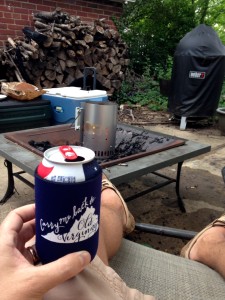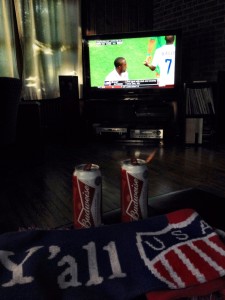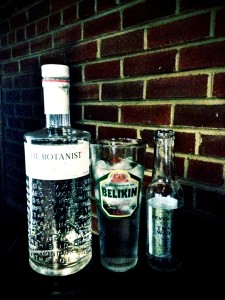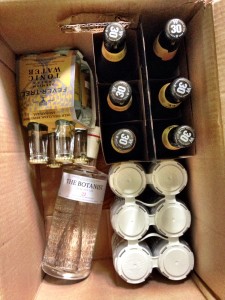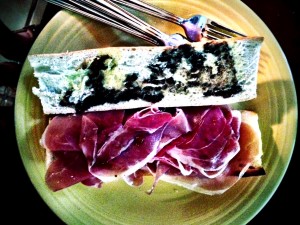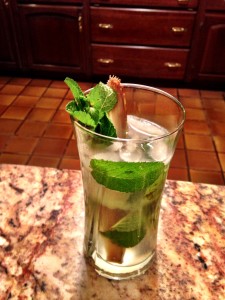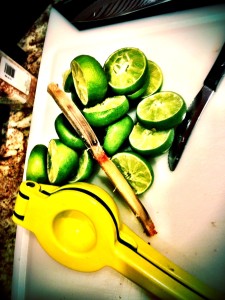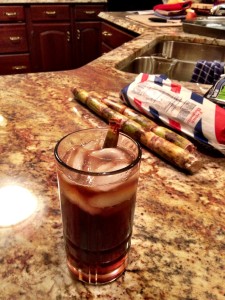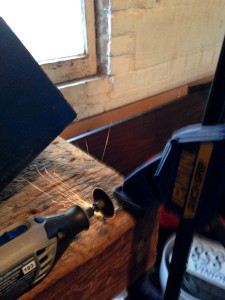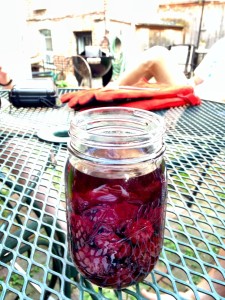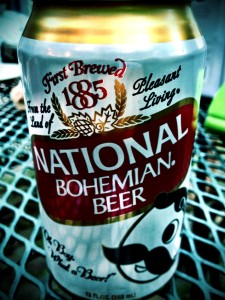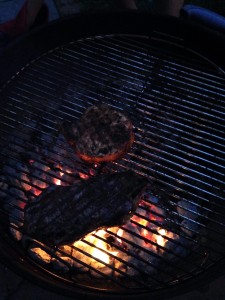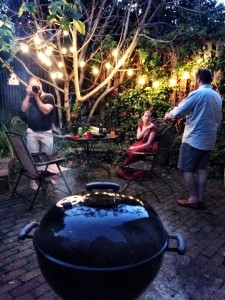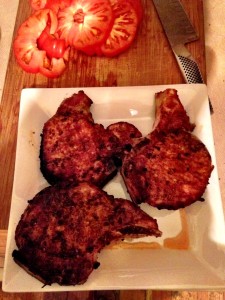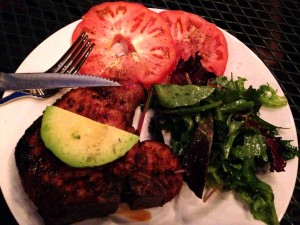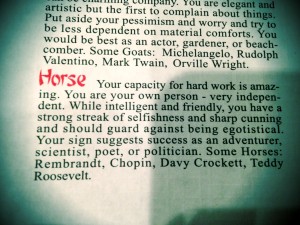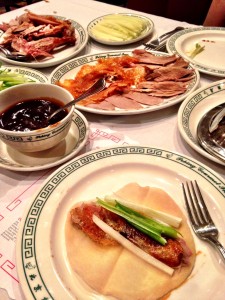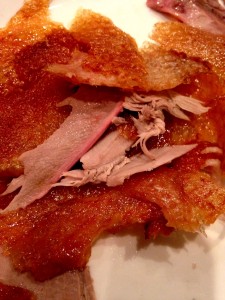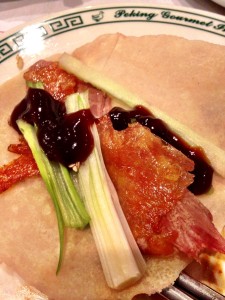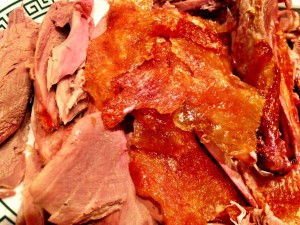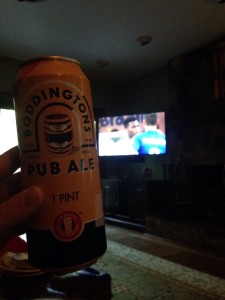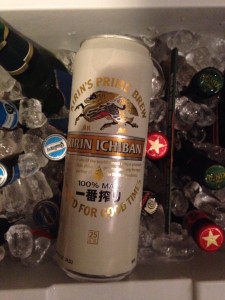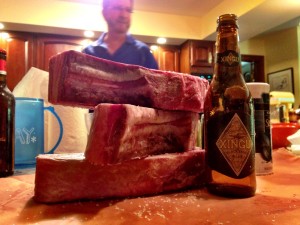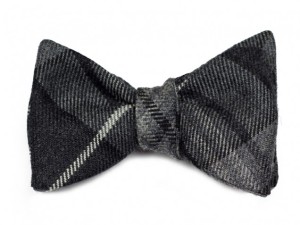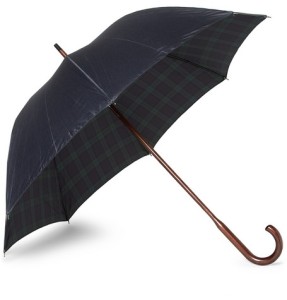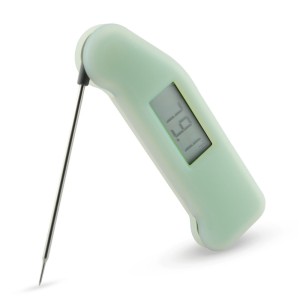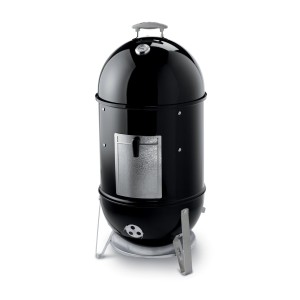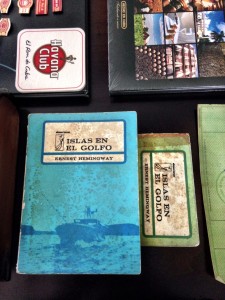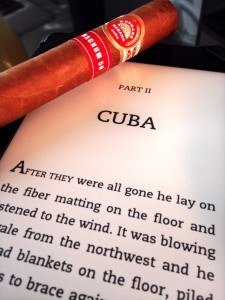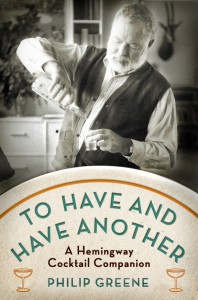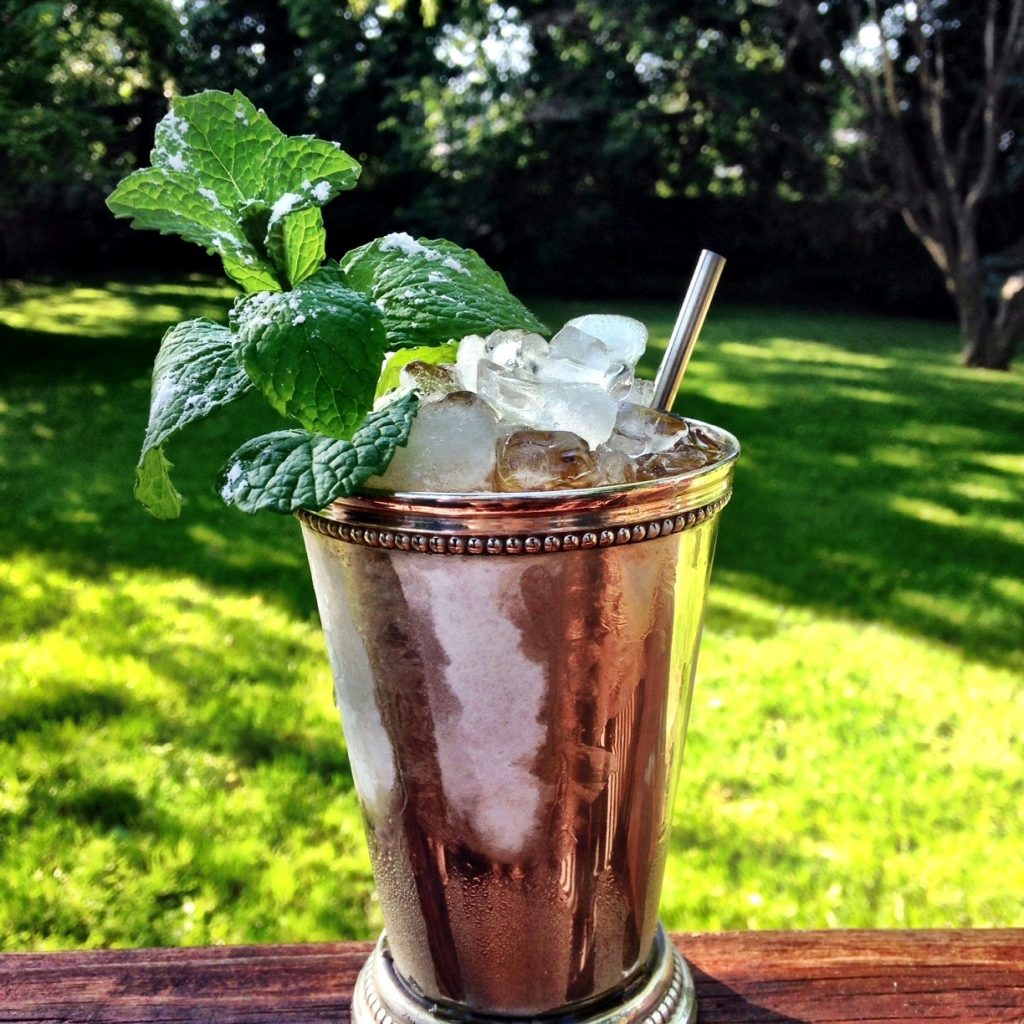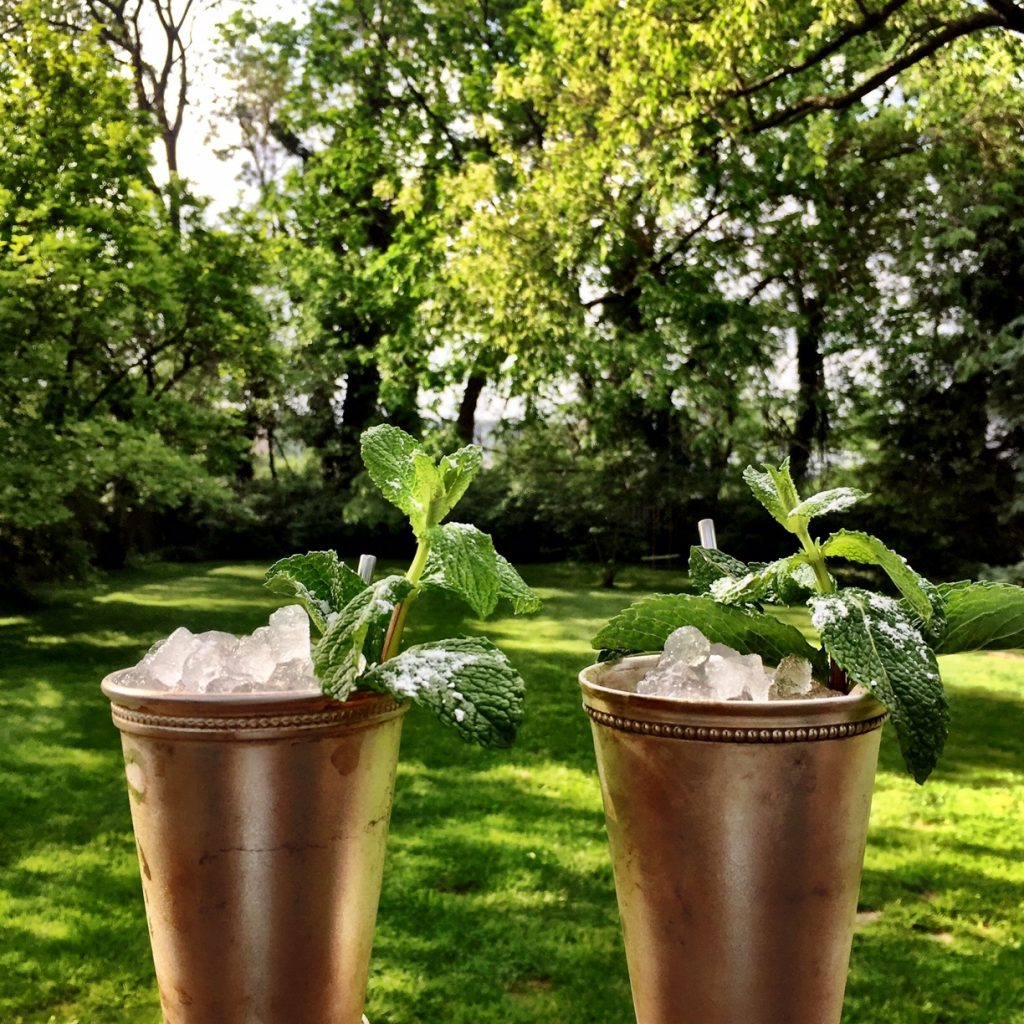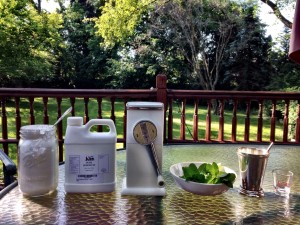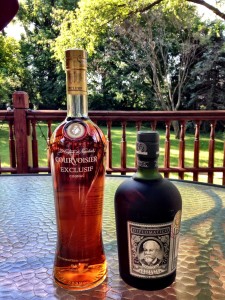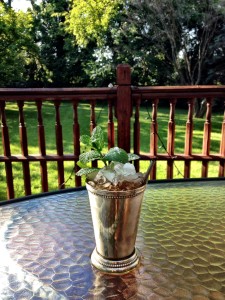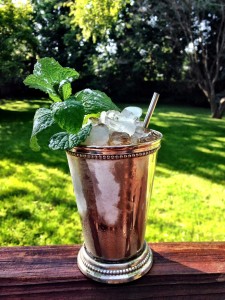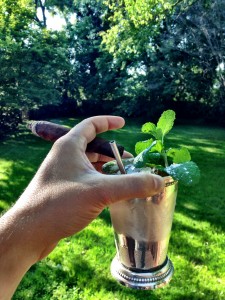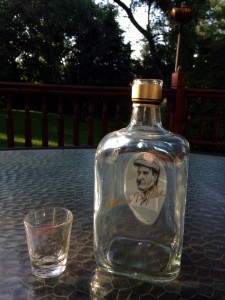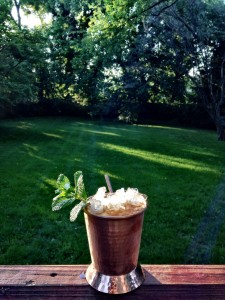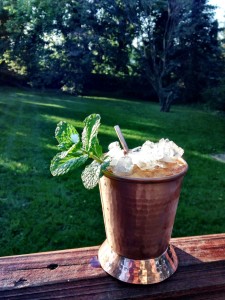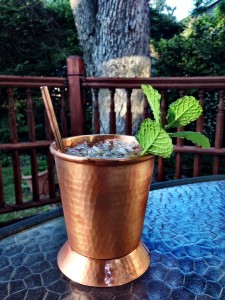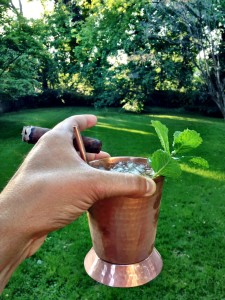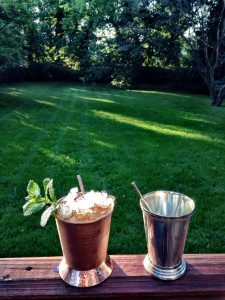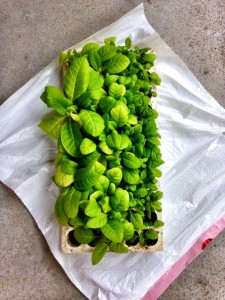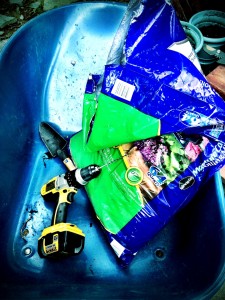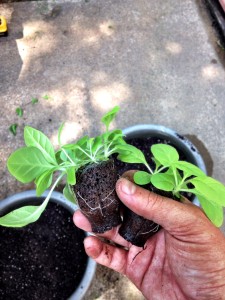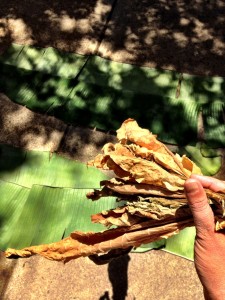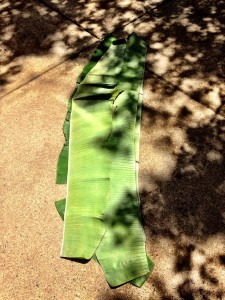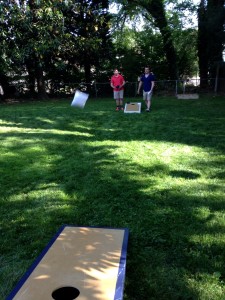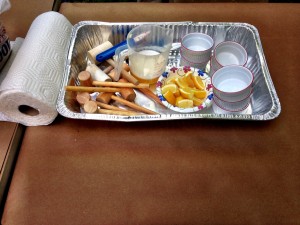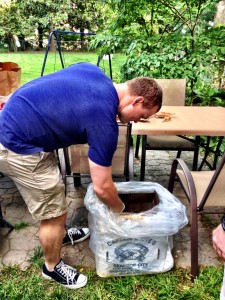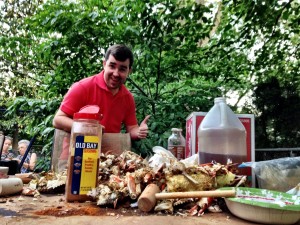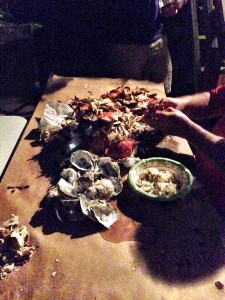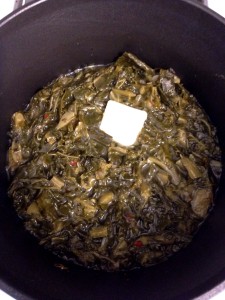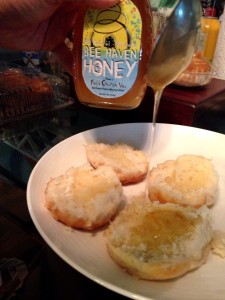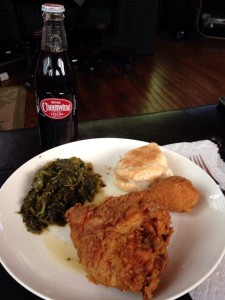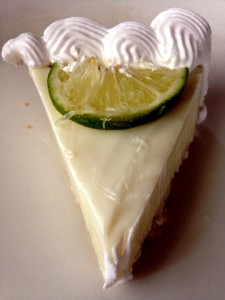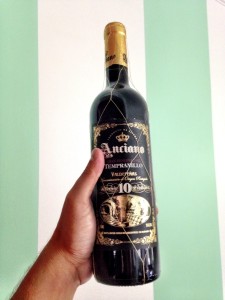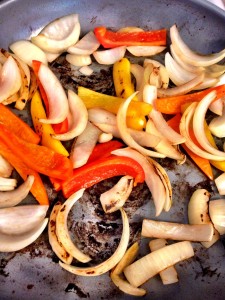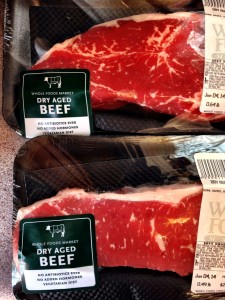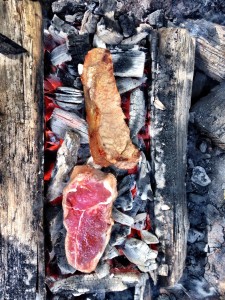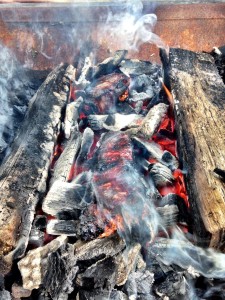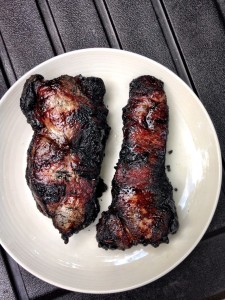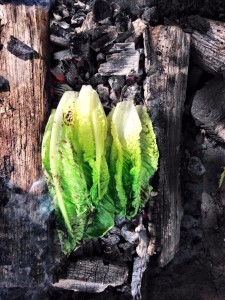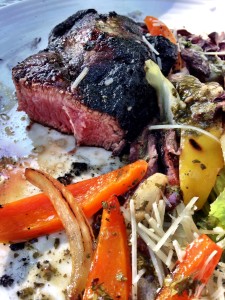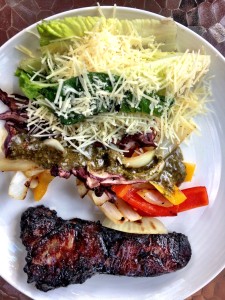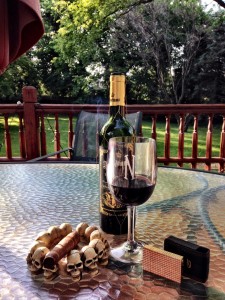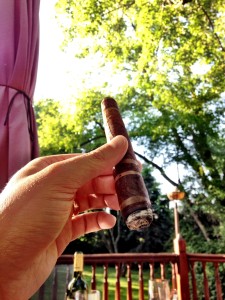World Cup Guide, World Cup NOVA/DC guide, Where to watch, Vamos Chile, Adiós Spana!
What a game for La Roja today. Vamos Chile!
I came across this very comprehensive WC guide, which has things to know, whats new this time around, stuff to buy, and links to even more guides:
http://gearpatrol.com/2014/06/11/watch-2014-world-cup-primer/
If you’re in the DC area, The Washington Post has lots of info about where to watch, and it keeps getting updated here. More info below:
More on the World Cup: Where to find fans of your favorite team | The area’s best soccer bars | World Cup happy hours | Tips for first-time fans | World Cup TV Schedule | All Washington Post World Cup coverage
For USA v. Ghana, I went to Laughing Man in DC (official American Outlaws DC Chapter bar), and it was insane. The problem is that you need to get there over an hour early just to get in. Another tried and true bar is Summer’s in Clarendon. In Falls Church, I may try Dogwood Tavern or Ireland’s 4Ps, both of which are showing WC games, and have lots of TVs.
by rsiv withWarning: count(): Parameter must be an array or an object that implements Countable in /home/bonviv6/public_html/wp-includes/class-wp-comment-query.php on line 405
Warning: count(): Parameter must be an array or an object that implements Countable in /home/bonviv6/public_html/wp-includes/class-wp-comment-query.php on line 405
no comments yet
More catch up, more ballin with reckless abandon
I’ve been busy enjoying the weather, and the lead up to the World Cup. The other day, my boy RyRy told me about instacart, and how they just teamed up with Magruders (Magrubers for Ry). I can now get home delivery of booze from the best liquor store in DC, which is a game changer (and very dangerous for my wallet and health). I gave it a try the day I found out about it, and was sipping the best gin and tonic I’ve ever had just a few short hours later.
We watched my home video footage of Cuba the other night, and enjoyed some Cuban-ish sandwiches, mojitos, and cuba libres.
I also had steak, stogie, and sauce night over at RyRy’s. For the uninitiated (which is everyone who is not in my inner circle as we invented it), S^3 is when you get the guys (and sometimes gals) together to grill out and enjoy life. Ryan hosted, and made some killer pork chops. I fashioned some extra julep straws, and brought the julep fixings. The mason jar has some mixed berry moonshine. Now call up your buds and have your own S^3.
We also went to another Nats game. Go Nats!
by rsiv withWarning: count(): Parameter must be an array or an object that implements Countable in /home/bonviv6/public_html/wp-includes/class-wp-comment-query.php on line 405
Warning: count(): Parameter must be an array or an object that implements Countable in /home/bonviv6/public_html/wp-includes/class-wp-comment-query.php on line 405
no comments yet
Peking Gourmet Inn, An Institution
Being in my early 30s, there are only so many restaurants I can say I’ve been patronizing for 30 years. Peking Gourmet Inn is one such restaurant. In its 30+ years of operation, not a whole lot has changed. My wife and I went for our anniversary, and got the essentials: A Suffering Bastard (or a few), Fried Dumplings, Peking Duck carved table-side, and Szechuan Beef Proper. Peking Gourmet Inn must have caught the tail end of the Tiki craze when it opened because its polynesian-style drinks are delicious and potent. They are a little sweet, but I imagine this is how they were preferred back when tiki was king. Two suffering bastards will make even a seasoned drinker buzzed. The 5 Suffering Bastard Challenge will put down even the most resilient frat boy in his prime (I, and my friends, would know). The food is excellent. The menu does not change, and foodies might be disappointed, but I don’t see how one could complain about delicious comfort food provided in large portions. Visiting Peking Gourmet Inn is like going back in time. The cocktails are strong, the army of servers are in smart uniforms and eager to please, and you can count on having a reliably pleasant dinner. The wife and I had a great anniversary dinner. We got to see what Chinese Zodiac Sign our future child will be. We’re still enjoying the leftovers, and we hope to enjoy Peking Gourmet Inn for another 30+ years.
by rsiv withWarning: count(): Parameter must be an array or an object that implements Countable in /home/bonviv6/public_html/wp-includes/class-wp-comment-query.php on line 405
Warning: count(): Parameter must be an array or an object that implements Countable in /home/bonviv6/public_html/wp-includes/class-wp-comment-query.php on line 405
no comments yet
Boozing your way though the World Cup, Father’s Day, Red Butcher’s 100 day dry aged bone-in ribeye, American Outlaws at Laughing Man DC
I went to total wine to get some beer for Father’s Day, and ending up getting just about enough beer to fill a World Cooler (trademark me) to get us through all the games until Sunday. I had a Brazilian beer (Xingu, a delicious black lager), and then some tequila (shown above) for the first two games. The first game I got to watch with my dad was Spain v. Netherlands. What a game. Then, instead of beer, we went with Sauv Blanc for Chile v. Australia. The choice in drinks had more to do with convenience/taste preference than which team we were rooting for.
After a break for some La Caraqueña and a caipirinha, and a trip to the butcher for some 100 day dry aged bone-in ribeye, we got back to soccer.
I added some more ice to the World Cooler, and then gave my dad some of his Father’s Day presents.
The ball shown above generates power during play, and then can be used as a reading lamp after. For every one you buy, they donate one to kids who do not have power, and therefore, no light to read by at night. We kicked it around until we were sufficiently embarrassed, and then enjoyed some more matches and beer. On the actual day of Father’s Day, we started with some milky, opalescent, absinthe. We salted the steaks, and got the grill hot. France and Argentina had games that day, so the wine was flowing (La Albiceleste are my #2 team).
The steaks were insane, and good times were had by all. After Father’s Day, my boozing streak came to an end when I was at the dentist, and then working, while Germany played Portugal. I had some white port and tonic ready, but was too busy to enjoy any. I wish I’d seen and boozed though that game, but Nigeria v. Iran would have ruined the streak anyway. The wife and I were able to get to Laughing Man in DC for the American Outlaws viewing of USA v. Ghana. It was so much fun/so crazy, we might go back for USA v. Portugal.
by rsiv withWarning: count(): Parameter must be an array or an object that implements Countable in /home/bonviv6/public_html/wp-includes/class-wp-comment-query.php on line 405
Warning: count(): Parameter must be an array or an object that implements Countable in /home/bonviv6/public_html/wp-includes/class-wp-comment-query.php on line 405
no comments yet
World Cup! US Match Schedule, Predictions, Links, Who I’m rooting for, Another reason the US won’t get behind soccer, etc.
The World Cup has begun. Last night’s game between Brazil and Croatia was exciting, but Brazil did not look to be in top form. I would imagine there were a lot of first time World Cup watchers from the US, but I’m concerned that after last night’s officiating, there won’t be many repeat watchers. If you didn’t catch the game (spoiler alert), the ref missed a Brazilian dive in the box, and awarded a penalty shot that completely changed the momentum of the game in Brazil’s favor. Check out this article about diving and American viewership here. It touches on the basics of what I just described, but really only scratches the surface of how players are incentivized to dive, and how FIFA is just letting it happen. Further, Americans will not learn to live with diving. I don’t know if its American pride, or what, but Americans will not be able to get past the diving issue. I don’t think the cheating aspect of diving is the issue. For example, we love juiced up MLB players that drop ball after ball over the fence. The difference is that steroids constitute cheating that makes one better. Diving/simulation is cheating that makes one look weaker/worse. Americans will watch diving in the World Cup and wonder why the rest of the world enjoys watching shameless effeminate foreigners pretend to be injured. I don’t know what the best solution is, but I know the issue could be resolved via fines, instant replay, etc. I hope FIFA does something, and does it soon.
Now for the more fun stuff. Lets start with the US group schedule:
6/16 USA v. Ghana (I’ll be at laughing man in DC with the American Outlaws)
6/22 USA v. Portugal
6/26 USA v. Germany
Other games I wouldn’t miss in the next few days:
Today/Friday: Spain v. Netherlands 3pm EST. Saturday: England v. Italy 6pm. Monday: Germany v. Portugal 12pm.
If you’re a US fan looking for another team to get behind, my first suggestion is to look to your family tree. My wife roots for Italy, and I hate Italy, which makes the games more fun. My roots are Scottish, English, and Irish, so I should probably root for England, but I don’t. As a contender, I like Argentina. I’ll have my Maradona jersey on and a Quilmes in my hand for the matches. As an underdog, I like Chile. When I was in Chile a few years ago, I hunted down a Camisa Roja in Santiago, which was more difficult than one would expect. Both are American (South) teams, and I like when the europeans get taken down a peg. They have all the best leagues, and the euro cup final, but when South American teams win the world cup, it proves that they aren’t the big dogs after all.
For US coverage, ESPN is good, but I like this blog.
For an interesting prediction bracket, check out this site.
For books to read during the cup, check out this one, and for the die-hard, this one.
Enjoy the matches, and good luck!
by rsiv withWarning: count(): Parameter must be an array or an object that implements Countable in /home/bonviv6/public_html/wp-includes/class-wp-comment-query.php on line 405
Warning: count(): Parameter must be an array or an object that implements Countable in /home/bonviv6/public_html/wp-includes/class-wp-comment-query.php on line 405
no comments yet
Islands in the Stream – Hemingway
I chose to read Islands in the Stream while I was in Cuba because of Hemingway’s real life connection to Cuba, because we were able to visit Hemingway’s home in Cuba, and because most of the book takes place in Cuba. While was I was Cuba, I only got through the first section, which did not take place in Cuba, but it was an enjoyable Island read none the less. The book’s protagonist is perhaps the most autobiographical of any of Hemingway’s main characters. Its an interesting window into Hemingway’s later life. He does not even change the name of his home in Cuba in the book, and the main character frequents many of Hemingway’s favorite watering holes while not hunting Germans. If you’ve not read Hemingway before, I don’t suggest starting here. If you’re read some of his more popular works, this is a great read for the Hemingway fan. If you’re looking for a light summer read, this probably isn’t for you. If you don’t mind a dark story of love and loss, told in the manly context of fishing, fighting, drinking, carousing with prostitutes, and hunting Germans (but also snuggling cats), this book will put some hair on your chest.
Also, all Hemingway books are best enjoyed with the companion book: To have and have another. I made several of Hemingway’s cocktails for Memorial Day, and enjoyed one at La Floridita.
by rsiv withWarning: count(): Parameter must be an array or an object that implements Countable in /home/bonviv6/public_html/wp-includes/class-wp-comment-query.php on line 405
Warning: count(): Parameter must be an array or an object that implements Countable in /home/bonviv6/public_html/wp-includes/class-wp-comment-query.php on line 405
no comments yet
Mint Julep Mega-Post!!! Recipes, Reference, How to videos, and Resources
- Perfect
- But better shared
I’ve long been a bourbon guy. I’ve also been a mint julep guy for quite some time. I can’t remember what exactly got me into either, but I can remember the first really good mint julep I ever had. I went to The Greenbrier many years ago and ordered a julep at the Lobby Bar. Despite The Greenbrier’s website showing a julep in a clear glass with citrus on its site and a plastic straw on another page, I recall getting a beautiful julep in a proper beaker. It was perfect or damn near anyway. There are so many reasons that its hard to get a good julep at a restaurant/bar, but I think the major obstacle is that establishments do not want to serve such a strong drink. The julep is from another time when people really drank and enjoyed the taste of hard liquor. Nowadays, most people seem to prefer that a drink have no taste of alcohol whatsoever and bars want to serve one ounce or 1.5 ounces of liquor per cocktail. I imagine its also costly to keep fresh mint on hand and employ bartenders that can craft a quality drink (as opposed to those that can only add vodka to redbull). If I’m at a bar thats not known for good cocktails, for say, a work happy hour, odds are I’ll order a bourbon or scotch neat. Not because I don’t want a cocktail, but because I doubt the bartenders’ ability to make a good one in a reasonable amount of time. Fortunately for me I live near Washington DC where there are plenty of excellent bartenders, and even bars with julep history. Here is the problem: If you want someone’s interpretation of a classic, by all means, enjoy a julep at any upscale bar. DC has plenty. If you find yourself north of the Mason-Dixon, Nick Nicholls (formerly of Berlin, MD) at Forest Hills Station House can serve you their interpretation from the menu, or a historically authentic julep made to order. So if you truly want the real deal you’ll probably have to make it for yourself (or have it made to your exact specifications).
So at this point, I imagine you’re wondering, “What is the correct/authentic mint julep recipe?” The answer is that it depends on the timeframe and your preferences. To truly understand the julep, and to become a champion of the julep, one must read, The Mint Julep by Richard Barksdale Harwell. In the aforementioned work, it is stated that one of the first recorded uses of the word julep in America was in 1787. It was said to contain rum, water, and sugar, and was drunk by a Virginian, in the morning. Recall that rum was quite popular in the Colonies at that time, and that whiskey did not become the most popular American spirit until quite a while later. In 1803, the julep was first described as having mint as an ingredient and this time, the spirit used was whiskey. Again, the context is a plantation in northern Virginia, and the julep is taken in the morning.
In the The Bon Vivant’s Companion (Jerry Thomas, 1862, source again is The Mint Julep by Harwell) a recipe for the Mint Julep is given, using Cognac, and a splash of Jamaica rum. Other recipes with various base spirits are given, but Cognac and Jamaica rum is given as the standard. Notice the published date (more on that later).
Elijah Craig is credited with first aging whiskey in charred barrels. This is said to have happened at his distillery, built 1789, and before his death, in 1808. By 1793, “Old Whiskey” was a term used in advertisements, and by 1814, the actual number of years the whiskey had been aged was advertised. That said, straight off the still ‘white dog’ whiskey is what predominated (Bourbon, Straight. Cowdery). Even though charred barrel aging was starting to be used, the modern practice of using brand new charred oak barrels once (and only once), would not become a standard practice until much later. 1849 is the first time whiskey is described as being red in color (Bourbon, Straight. Cowdery). At this time, whiskey was very very rarely sold in bottles. Distillers sold white whiskey to wholesalers, who then might, “rectify” it, by charcoal filtering, adding fruit, redistilling it, or some other process to improve the flavor. There were no laws about labeling, so if you could make whiskey look dark, and you could sell it as aged whiskey (Bourbon, Straight. Cowdery). After the bottled in bond act of 1897, and the invention of a bottle making machine in 1903, bottled whiskey, and guaranteed aged whiskey, would become more common. Once can experiment with unaged whiskey in a julep, but I’d wager you’re unlikely to love the result.
So now that you know a little more about the spirits that are often used as the base for the julep, lets talk about when/why one should use each.
If you want a colonial/antebellum mint julep, one that a Virginia statesman such as many of our founding father’s would have enjoyed, I suggest Madeira, Cognac, brandy, or rum. It would also be authentic to use claret (red Bordeaux) or unaged whiskey, but again, I don’t think you’ll enjoy a white dog julep, and a claret julep does not have the strength of the other options. Madeira was the preference of many of the more wealthy planters, but at around 20% alcohol or 40 proof, it is not quite as strong as a hard liquor. My suggestion is to use Cognac or brandy, but feel free to substitute any of the above options in my recipe below. I also like to add some rum for a little something extra.
Colonial / Antebellum Mint Julep
Add roughly 10 mint leaves (preferably Kentucky Colonel) to a metal beaker (Julep cup) and bruise lightly to bring out their aroma. Fill beaker with crushed ice. Add sorghum syrup (or equal parts sugar and water, heated to create a syrup) to taste. I suggest roughly a quarter ounce of syrup. Add Cognac to the beaker until almost full. Add a dash of rum to the beaker, preferably Jamaica rum. Mix with a spoon. Top with more crushed ice. Garish with a sprig of fresh mint, and serve with a metal straw that just crests the rim of the beaker.
Despite the knowledge I’ve tried to impart, I can imagine that many of you cannot accept a Mint Julep without whiskey. Fortunately, my next two recipes do include whiskey. Recall that white whiskey was a drink of the common man. In the The Mint Julep by Harwell, there is an account of a wealthy Virginia planter drinking a Mint Julep made of whiskey, but this was during the Civil War when good liquor may have been hard to come by. In the reconstruction era, many southern families fell on hard times. It is likely they drank white whiskey in their Juleps. I do not suggest that you do the same (at least not regularly), but I will provide the following recipe:
The Reconstruction Era Mint Julep.
Add roughly 10 mint leaves (preferably Kentucky Colonel) to a metal beaker (assuming the Yankees didn’t loot your family silver, and you haven’t had to sell your valuables to a carpet bagger) and bruise lightly to bring out their aroma. Fill beaker with crushed ice. Add sorghum syrup (or equal parts sugar and water, heated to create a syrup) to taste. I suggest roughly a quarter ounce of syrup. Add white whiskey to the beaker until almost full. Mix with a spoon. Top with more crushed ice. Garish with a sprig of fresh mint, and serve with a metal straw that just crests the rim of the beaker.
In the early 1900s, brown liquor was starting to become more common. Unfortunately, prohibition would change that. Moonshine was plentiful and white whiskey remained the king. So to enjoy a modern mint julep, one must wait until post-prohibition when the medicinal bourbon distilleries got back to capacity, and new distilleries opened to meet demand.
The Modern / Post-Prohibition Mint Julep
Add roughly 10 mint leaves (preferably Kentucky Colonel) to a metal beaker and bruise lightly to bring out their aroma. Fill beaker with crushed ice. Add simple syrup (equal parts sugar and water, heated to create a syrup) to taste. I suggest roughly a quarter ounce of syrup. Add bourbon to the beaker until almost full. Mix with a spoon. Top with more crushed ice. Garish with a sprig of fresh mint and sprinkle the mint with powered sugar. Serve with a metal straw that just crests the rim of the beaker.
Have you ever heard that its blasphemy to mix good bourbon? Well… thats a good rule, but like all rules there are exceptions, and rules are made to be broken. I like to use what I consider to be middle-quality bourbon in my juleps. My overall suggestion to you is to use Elmer T Lee. ETL is really more of a top shelf bourbon at a middle price level (as of the writing of this post), making it a great value. It also has a lot of sweetness, which works well in a julep. If you prefer to use bottom shelf/value bourbon, for Kentuckians, I suggest Very Old Barton. Its easy to find and about the best value on the shelf. For Virginians, I suggest Virginia Gentleman. If you’re from somewhere else, you can probably still find one, if not both of these options. If you prefer top shelf bourbon in your julep, I bet you already know what you want to use.
If you haven’t already, notice that The Greenbrier’s mint julep recipe is quite similar to the Modern recipe I’ve provided. The Greenbrier succeeds in making a quality modern julep, but I think they have a luxury of budget, and a tradition of history, that no establishments can match. Others can and do put out a quality julep, but it is rare. This is especially true since many high quality bars like to put their own spin on a julep. There is certainly nothing wrong with that, but this post is about history and the classics.
I’d like to take a quick aside and talk about my copper julep cup. I bought these after seeing an article about them in Garden and Gun. They’re beautiful, but also significantly larger. Copper is not traditional, but I highly recommend them (especially in addition to a more traditional set).
Making a great mint julep is fairly easy to learn, but difficult to master. So how and why does the julep get ruined in restaurants? They use the following recipe:
The Post-Modern Mint Julep
Take the fundamentals of the mint julep as provided above. Then consider mass appeal and profit.
Examples include serving in a glass with a plastic straw, adding soda water, using granulated sugar, using the wrong type of mint, the list goes on. If you have to add fruit, at least choose a fruit that grows in the south, in America. Strawberry or peach are examples of authentic additions. Let me briefly clarify my comment about granulated sugar. It can be used to make simple syrup. It should not be stirred into water or bourbon as it does not completely incorporate. If you are too lazy to make simple syrup (which when made most simply, involves pouring equal parts water and sugar into a pyrex container/mug and microwaving for about a minute) then at least seek out superfine sugar, which dissolves much more quickly than granulated sugar. Lets look at a real world example of a Post-Modern Julep:
Branch water is not I-talian sparkling water. They used lemon, but not a beaker. “Southern style.” I’ve had this julep and it is enjoyable, but given this bar’s heritage, I expect better. One could ask for no sparkling water, and no lemon, but it would still be served in a glass.
Now, my gift to you, lets watch a true master craft a julep the way God intended:
This master and champion of the julep discussed the seasonality of the julep, gave us a history lesson and a physics lesson, and recited a poem, all while teaching us the art of the mint julep. I have never seen such an informed and passionate barman. Truly an inspiration.
Post Bonus: An interview with, and an article about, Chris McMillian, the bartender featured above.
If you’re looking for more recipes, The Mint Julep by Richard Barksdale Harwell has a wealth of detailed poetic instructions and rituals. As you can hopefully tell, as a Virginian, and bourbon connoisseur, I take my mint juleps seriously. I hope I’ve gathered and presented information on this quintessential American cocktail in an entertaining, interesting, and informative way. My goal was to create the most comprehensive and subjectively superior blog post on the julep to date. Its my sincere hope that you procure a julep cup, julep straw, Kentucky Colonel mint (spearmint from the grocery store or your garden will do in a pinch), and use this post to make yourself a truly great julep.
When the mint is in the liquor and its fragrance on the glass
It breathes a recollection that can never, never pass–
When the South was in the glory of a never-ending June
The strings were on the banjo and the fiddle was in tune,
And we reveled in the plenty that we thought could never pass
And lingered at the julep in the ever-brimming glass.
— Clarence Ousley
If you need some supplies:
Julep Cups (I suggest silver-plated (my preference) or pewter, assuming your budget/inheritance doesn’t include silver. Figure out what size/volume you want. My copper cups have a 12 oz capacity. I would estimate that my silver plate cups have an 8-10 oz capacity.)
Julep Straws (You want the straw to come to just above the rim on the cup, so that one can enjoy the fragrance of the mint while sipping. Steel straws can be cut with a dremel tool, with a metal cutting disk. I use a copper tube cutter for my copper straws, which are really just lengths of tube I cut down to size.)
Kentucky Colonel Mint (my local herb place didn’t have any of the colonel this year, so I ordered it online. Mine shipped from Richmond, so at least a Virginian got my money.)
Nugget Ice Machine Just like sonic or cook out. One of my least favorite parts of making a mint julep is finding my lewis bag and mallet. This takes a lot of the work (but perhaps some of the soul) out of making a julep. I love mine. For better or worse, it definitely has me making more juleps.
by rsiv withWarning: count(): Parameter must be an array or an object that implements Countable in /home/bonviv6/public_html/wp-includes/class-wp-comment-query.php on line 405
Warning: count(): Parameter must be an array or an object that implements Countable in /home/bonviv6/public_html/wp-includes/class-wp-comment-query.php on line 405
no comments yet
Weekend Update, Tobacco farming, grad party, fried chicken and soccer
I got this year’s tobacco in the ground. The last pot pictured is a half barrel from Jim Beam that I bought at Home Depot. The other half has kentucky colonel mint growing in it.
Then I tried to get some of my previous crop fermented. I took a handful of old tobacco, added some moisture, and put it out in the sun in some banana leaves. A Cuban tobacco farmer told me about this method.
I also went to a fraternity brother’s graduation party. We had crabs, shucked oysters, had pie. There was even chick-fil-a nuggets. Quite a spread. The cornhole pic makes me feel like it was ’06 again.
Sunday we watched the US Men’s soccer team play Turkey. We wanted some American food, but were lazy, so we went to Teeter and bought chicken, canned collards, and premade biscuits. We opened some very local honey, and enjoyed the game. The key lime pie, and the US win were pretty sweet.
by rsiv withWarning: count(): Parameter must be an array or an object that implements Countable in /home/bonviv6/public_html/wp-includes/class-wp-comment-query.php on line 405
Warning: count(): Parameter must be an array or an object that implements Countable in /home/bonviv6/public_html/wp-includes/class-wp-comment-query.php on line 405
no comments yet
Clinching, steak without a grill (directly on the coals), the most paleo of all grilling methods (though I’m no expert)
A couple years ago, a friend of mine got a book about grilling. In it (link at the bottom), it suggested putting meat directly on the coals as a very (very) old school way of grilling steak. We tried it, and the steaks came out great. I don’t do it often, but my gas grill has a leak that I have yet to address, and I had some all natural charcoal left over from smoking, so I decided to clinch some steaks. I assume the term clinching comes from the fact that the coals stick (clinch) to the steak, even when turned. This is a great method for when your grill is broken, but its also great for camping, or even cooking in your fireplace.
I was at whole foods, so I got some dry aged beef. My wife is pregnant, so I started hers in the oven to ensure it was at least medium (doctor’s orders), while I threw my on raw, hoping for medium rare (or rarer).
When you clinch, you always get a good charred crust on the outside, even if the steak is still rare on the inside. This time, I ended up with medium rare in the center, more like medium on the ends, but it was good none the less. I also threw the lettuce directly on the coals for about 15 seconds per side, in order to get a little char on them as well.
I enjoyed a nice bottle of wine, and a custom rolled cigar from Cigar World in McLean. The weather was great, and the meal was delicious.
Edit:
Found a video, and the original book here. Don’t bother with all that hair dryer business. Keep it simple like I did.
by rsiv withWarning: count(): Parameter must be an array or an object that implements Countable in /home/bonviv6/public_html/wp-includes/class-wp-comment-query.php on line 405
Warning: count(): Parameter must be an array or an object that implements Countable in /home/bonviv6/public_html/wp-includes/class-wp-comment-query.php on line 405
no comments yet


